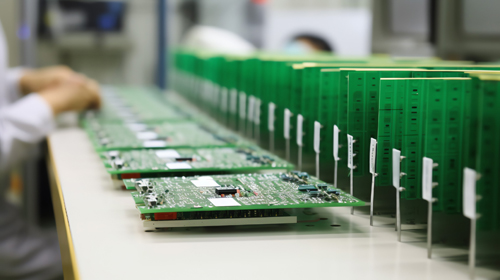
From defibrillators and patient monitors, to diagnostic imaging systems and infusion devices. electronics are an essential component in some of the most established and commonly used medical innovations.
Some of the most prominent medical innovations that rely on the latest electronics and electrical components to successfully improve patient lives are discussed herein.
1. Wearables
Wearable devices, such as smart watches, glasses, rings, and clothing incorporating patient monitoring capabilities may be the most widely-known electronic innovations. The development of novel biosensors to measure heart rate, body temperature and sleeping habits are often the focus of wearable products, but it’s the microelectronics inside which allowthese devices to be scaled down while still carrying out their intended function. Furthermore, for wearables it’s critical for these technologies to be lightweight, comfortable, discreet, energy efficient and robust.
Wearable devices are also driving the uptake of telemedicine – which has been exacerbated by lockdowns and social distancing protocols during the Covid-19 pandemic. Smart technologies are enabling doctors to monitor patients remotely, from actigraphy watches and continuous glucose monitors to more invasive examples like implantable ECG (electrocardiogram) devices.
2. Brain Stimulation Innovations
Devices being used to deliver low-level pulses of electricity to the brain and stimulate neural activity have become increasingly advanced as developers strive to improve the safety and performance of these technologies. Some include:
- Lightweight, battery-powered headsets to administer transcranial direct current stimulation (tDCS) to redress imbalances in the brain which are believed to cause mental health conditions such as depression.
- Cognitive performance improvement, sleep quality or general mood enhancers use similar forms of neurostimulation.
3. Improved Hearing Aids
Hearing aids are anexample of a medical technology that has been around for a long time, but continuing to develop groundbreaking innovations on a regular basis.
Microelectronics enable more discreet, near-invisible earpieces means the components and assembly technologies must be scaled further than ever before.
Other critical capabilities include reduced power consumption, tinnitus masking features, connecting to a smartphone via Bluetooth, and even the addition of extra features like answering phone calls and streaming audio directly from TVs.
4. Robotics
Robotics play a number of different roles – and electronics are required for every one of these functions.
In hospitals, robot-assisted surgery allows complex operations to be carried out with more precision, flexibility and control. These have given rise to minimally-invasive procedures that shorten recovery times and mitigate many of the risks associated with open surgeries.
Further AI-powered robots are making their way into the hospital to aid doctors and nurses, and into the home setting to help elderly or disabled patients with daily activities. The key area where more advanced electronics are likely to play a significant role moving forward is in prosthetics andexoskeletons.
Current “passive” prosthetic body parts like hands and feet with limited real-life functionality are giving way to myoelectric, bionic limbs which are driven by external, electrical power sources to respond to the user’s muscle movement and to assist with a number of everyday tasks.
5. Stretchable Electronics
Stretchable electronics combine silicon-based computer circuits with flexible substrates made from materials like silicone or polyurethane.
They open up a whole new frontier for computer circuit innovations. These technologies can be distorted without impacting the functionality of their circuitry to permit operation in spite of being stretched or folded.
Potential applications include artificial skin, biosensors that can be placed directly onto skin to measure heart rate, blood pressure or temperature.
Stretchable electronics may be able to build upon existing developments in smart clothing and garments with inbuilt monitoring capabilities to make the sensors used in these wearables even more seamless.
Optima Technology is a global provider of PCBs, PCB Assemblies, Cables and System Assemblies located in Lewisberry, PA and New Delhi, India. Since 1995, Optima has specialized in providing local support coupled with cost-effective pricing via offshore manufacturing through our ISO approved facilities. Please reach out to optima@optimatech.net if you’d like to discuss further your PCB or Electronic Assembly needs.